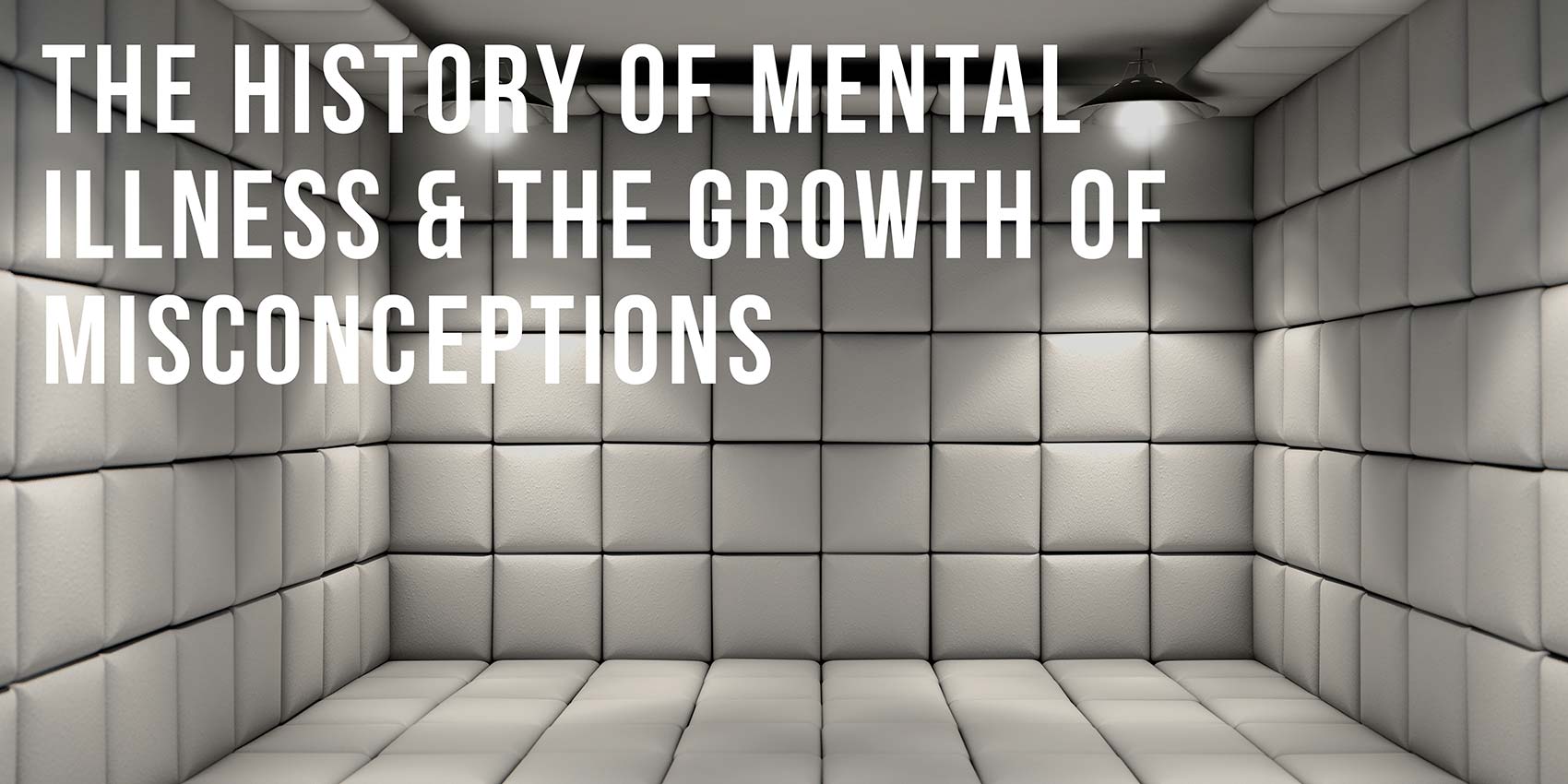27 Mar The history of mental illness & the growth of misconceptions

In the beginning…
During the 18th and 19th centuries, when very little was understood about mental illness, people suffering from it were chained to beds, labeled as lunatics, treated in a way that one might consider torture, and considered social degenerates (basically not fit for society). Institutions were build to house the insane and the criminally insane. These people were considered “mad.”
The reasons why people were sent to these places for “treatment” ranged from totally normal sounding criteria (novel reading, politics, fighting fire, fever and jealousy) to more serious disorders like murder, torture and an inability to grasp reality. Why the disparity (meaning the difference)? Because of the times…. back then, if husbands didn’t like what their wives had to say, off they went to the insane asylum. Yep. Wanted to get rid of a difficult child? Send her away. Yes, that really happened. And, yes, you can breathe easier about being a bit rebellious because that doesn’t happen anymore.
Thankfully, during the late 18th century a more humanitarian effort began to shift both the attitudes toward the mentally ill and the treatments for them. Doctors discovered that if you took a mentally ill patient out of a dungeon, removed his handcuffs, placed him in a sunny location and allowed him to interact with other people who were caring, he improved! This novel (new) approach became a model for the moral treatment of the mentally ill. Imagine that? It took one doctor, after decades of mistreatment, to come along and say, “We’re not really helping these people. Let’s try being nice and considerate,” for professionals to realize the best way to help the mentally ill was through social and emotional support.
What was done…
Then to further better treatments, in 1952 the American Psychiatric Association created an understanding and an order to the various character traits describing the various forms of mental disturbances. They published the first edition of the DSM: The Diagnostic and Statistical Manual of Mental Disorders. This book does for mental health professionals what your dictionary does for you when you don’t know the meaning of a word. It also helped change the way mental illness was viewed and treated. Consider it like the Google of mental health care.
A new approach…
Today, people are not usually institutionalized for having a mental illness – institutional care is more the exception than the rule. Every day, doctors and health professionals work to help people overcome mental illness and disorders just like your doctor helps you overcome a cold, broken leg or a hearing problem. And just like with a physical or medical condition, professionals look at the cause of the problems and the symptoms to arrive at a proper diagnosis.
What is a diagnosis?
A diagnosis is a label applied as the result of identifying a problem based on the symptoms a person has. A diagnosis is a short hand description that helps people talk about a condition. Just like when you say, “I have a cold” people know that you likely have a runny nose, congestion, a cough, are tired and don’t feel well. But you don’t have to say all those things, you just say, “I have a cold.” And just like with physical conditions, once a diagnosis is made for mental illness, treatment is much easier.
A New Mindset…
Mental illness or a mental disorder is just like any other illness – something that needs to be addressed and treated… so people can heal and live their lives. People with mental disorders are treated as just that: PEOPLE who need help with their mental lives, just like people sometimes need help with their physical lives.
Better understanding has led to better care, better treatments and less stigma (a stigma is like a belief that something is defective). After Jennifer Lawrence won the Oscar for her role in Silver Linings Notebook (2013), a movie about mental illness, she spoke backstage about the stigma of mental illness and how important it is that we regard the treatment of mental illness much like we do the treatment of diabetes or asthma.
Unfortunately, as Jennifer Lawrence points out, many misconceptions still do exist. Read on to clear them up!




Post Question:
What is the first thing you think about when you hear the words “mental disorder?”
Answer the post question here
What's being said